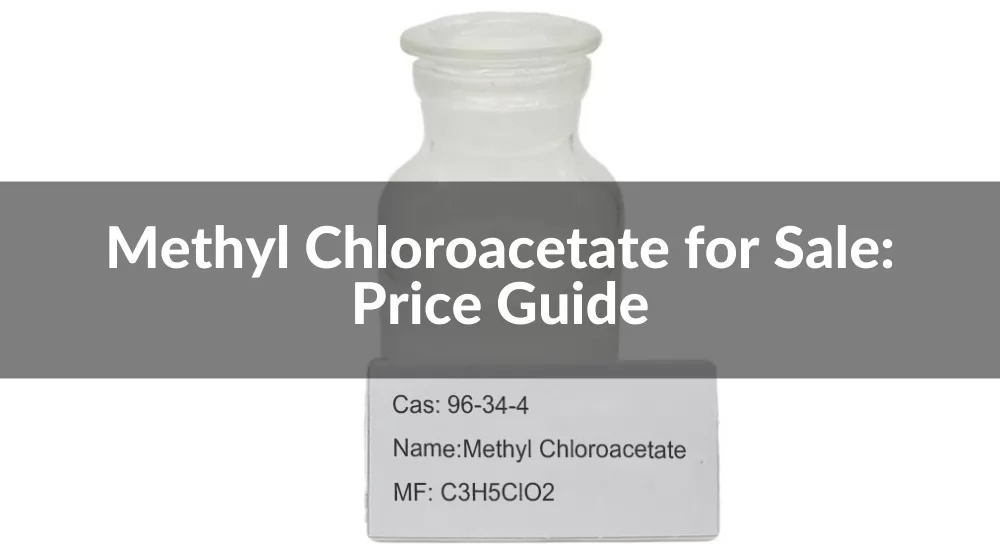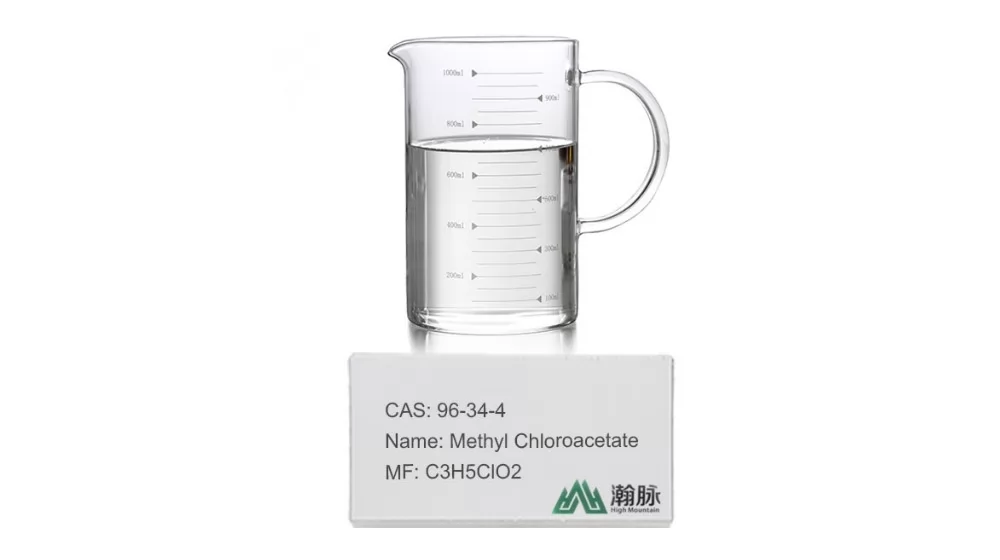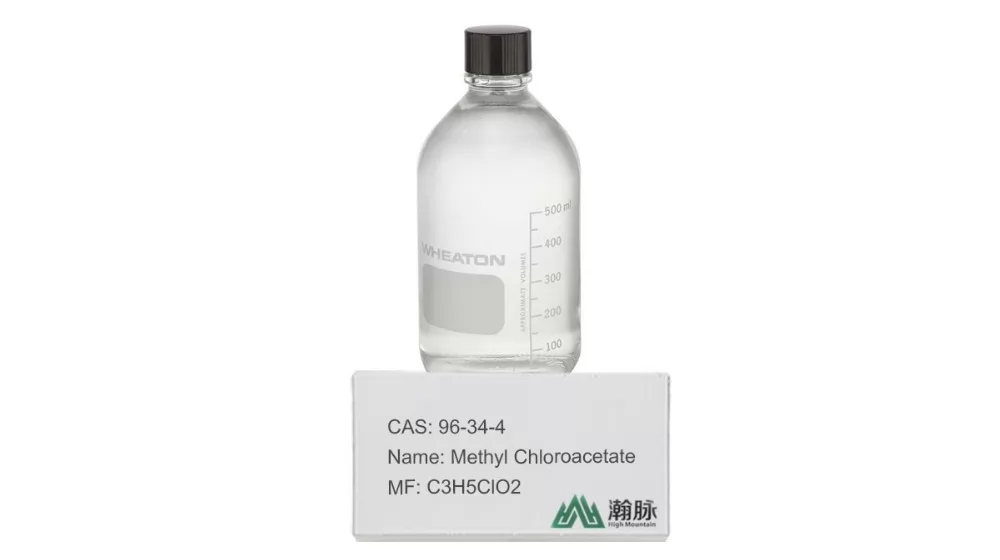

Welcome to an in-depth exploration of Methyl Chloroacetate, a versatile and vital chemical in today's industrial landscape. From its multifaceted applications in pharmaceuticals and agrochemicals to its global market dynamics, this article delves into everything you need to know about Methyl Chloroacetate. Discover its chemical properties, production process, and the factors influencing its price, as we navigate through the complexities and opportunities it presents in various industries.
Methyl Chloroacetate, often represented by its chemical formula CH3ClO2, stands as a pivotal compound in the world of industrial chemistry. This versatile chemical, known for its clear, colorless appearance and sharp, pungent odor, is widely utilized across various sectors, including pharmaceuticals, agrochemicals, and the manufacturing of synthetic materials.
At its core, Methyl Chloroacetate is an ester - a product of the reaction between an acid and an alcohol. Specifically, it's formed from chloroacetic acid and methanol. This esterification process imbues Methyl Chloroacetate with unique properties that make it highly sought after. These include its ability to act as a solvent, its reactivity in organic synthesis, and its use as an intermediate in the production of various chemicals.
Understanding its role and applications is crucial for businesses and industries considering its purchase, especially when exploring Methyl Chloroacetate for sale. The demand for this compound often correlates with its price, which is influenced by factors such as global market trends, production costs, and availability.
The significance of Methyl Chloroacetate extends across a wide range of industries, underscoring its versatility as a chemical compound. Its unique properties lend it to be a key ingredient in several crucial industrial applications.
In the pharmaceutical industry, Methyl Chloroacetate is used as an intermediate in the synthesis of various drugs. It plays a critical role in the production of life-saving medications, including those used in the treatment of cardiovascular diseases and certain types of cancer. The compound's ability to participate in various chemical reactions makes it indispensable in drug formulation.
The agrochemical sector also relies heavily on Methyl Chloroacetate. It's a key component in the manufacture of herbicides, pesticides, and fertilizers. Its effectiveness in these products helps in boosting agricultural productivity and, consequently, in supporting the global food supply chain.
Furthermore, in the field of synthetic materials, Methyl Chloroacetate is used to produce various polymers and resins. These materials find their way into numerous products, from automotive parts to consumer goods, showcasing the compound's wide-reaching impact.
The chemical attributes of Methyl Chloroacetate are central to its effectiveness and applications across various industries. This compound, with the molecular formula C3H5ClO2, showcases a unique set of properties that are essential to understanding its role and usage.
One of the key characteristics of Methyl Chloroacetate is its reactivity. It reacts readily with various organic and inorganic compounds, making it a valuable reagent in chemical synthesis. This reactivity is particularly beneficial in creating complex molecules needed in pharmaceuticals and agrochemicals.
The compound's physical properties, such as its boiling point at 143°C and its distinctive, pungent odor, make it easily identifiable in industrial settings. Its solubility in organic solvents and its role as an effective solvent itself further broaden its range of applications.
Additionally, Methyl Chloroacetate's stability under various conditions is a critical aspect. It maintains its structural integrity in different environments, ensuring consistent performance and reliability in its applications.
The manufacturing of Methyl Chloroacetate involves a series of precise and controlled chemical reactions, crucial for producing a high-quality product. Understanding this process is essential for industries and businesses considering its purchase, especially in terms of assessing quality and supply chain reliability.
The production of Methyl Chloroacetate primarily involves the esterification of chloroacetic acid with methanol. This process is typically catalyzed by a strong acid, such as sulfuric acid, which accelerates the reaction and increases the yield. The reaction is exothermic, releasing heat, and requires careful temperature control to maintain optimal conditions.
Upon completion of the reaction, the mixture is subjected to a purification process. This often involves distillation, where the Methyl Chloroacetate is separated from the other components based on differences in boiling points. The purity of the final product is critical, as it directly affects its performance in various applications.
The efficiency and environmental impact of the production process are also key considerations. Advancements in technology have led to more sustainable and cost-effective methods of production, which not only benefit manufacturers but also appeal to environmentally conscious consumers and industries.
The market price of Methyl Chloroacetate is subject to a variety of influencing factors, each playing a pivotal role in its fluctuating costs. Businesses seeking to purchase this compound should be aware of these elements to make informed decisions and optimize their procurement strategies.
Supply and demand dynamics are fundamental drivers of price. An increase in demand from major industries, like pharmaceuticals or agrochemicals, can lead to higher prices, especially if supply is limited. Conversely, an oversupply in the market can result in lower prices.
The cost of production and logistics also significantly impacts the price. This includes the cost of raw materials, energy, labor, and transportation. Any changes in these areas, whether due to economic shifts or technological advancements, can affect the overall cost structure.
Regulatory policies and environmental standards in different countries can influence prices too. Stricter regulations might lead to increased production costs due to the need for compliance with environmental, health, and safety standards.
Additionally, currency fluctuations and global economic conditions play a significant role. Since Methyl Chloroacetate is traded internationally, changes in currency values can impact the cost for importers and exporters, thereby affecting the global market price.

Anticipating the future pricing trends of Methyl Chloroacetate is crucial for businesses planning long-term strategies. While precise predictions are challenging, several indicators can provide insights into the potential direction of its market value.
The ongoing developments in the pharmaceutical and agrochemical industries, where Methyl Chloroacetate finds significant application, suggest a steady demand. This consistent demand could lead to stable or slightly increasing prices, especially if new uses for the compound are discovered.
Technological advancements in production could also play a role. More efficient manufacturing processes might lead to reduced production costs, potentially balancing out any increases due to demand. However, this is contingent on the pace and adoption of such innovations.
Global economic factors, including raw material availability, geopolitical stability, and environmental policies, will continue to be significant determinants. Any disruptions in these areas could lead to price volatility.
Lastly, the increasing focus on sustainability and green chemistry may influence future pricing. As industries and regulations move towards more environmentally friendly practices, the cost of compliance and potential shifts in raw material sourcing could impact prices.
While the future is never certain, staying abreast of these trends and factors will help businesses in the Methyl Chloroacetate market navigate future pricing scenarios with greater confidence and strategic insight.
In the pharmaceutical industry, Methyl Chloroacetate is a key intermediate in the synthesis of various active pharmaceutical ingredients (APIs). Its reactivity makes it ideal for forming complex molecular structures found in many drugs, including antibiotics and antiviral medications. This versatility underscores its vital role in drug development and production.
Methyl Chloroacetate's role in agrochemicals cannot be overstated. It is crucial in the production of herbicides and pesticides, aiding in effective pest control and crop protection. This application is essential for enhancing agricultural productivity and ensuring food security, especially in rapidly growing global populations.
Beyond pharmaceuticals and agrochemicals, Methyl Chloroacetate finds extensive use in various industrial applications. It's a solvent in the manufacture of plastics, synthetic fibers, and resins. Its role in the production of coatings, adhesives, and sealants further highlights its versatility and importance across diverse manufacturing sectors.
Selecting a reliable supplier for Methyl Chloroacetate is critical for ensuring quality, consistency, and value in your supply chain. Here are key factors to consider when choosing a supplier:
Quality Assurance: The supplier should have stringent quality control measures in place. Certifications like ISO standards can be a good indicator of their commitment to quality.
Production Capacity: Assess the supplier's ability to meet your quantity requirements, especially during peak demand periods, to ensure a stable supply.
Supply Chain Transparency: A transparent supply chain aids in tracking the product's journey and ensures ethical sourcing and manufacturing practices.
Regulatory Compliance: Ensure the supplier adheres to all relevant local and international regulations, which is crucial in minimizing legal and safety risks.
Customer Service and Support: A supplier with robust customer support can significantly enhance the purchasing experience, offering assistance and advice when needed.
Competitive Pricing: While price should not be the only criterion, a supplier that offers competitive pricing along with quality assurance can provide the best value for your investment.
Ensuring the safe handling and storage of Methyl Chloroacetate is crucial for protecting workers, the environment, and maintaining the integrity of the chemical. Here are essential guidelines to follow:
Personal Protective Equipment (PPE): Workers handling Methyl Chloroacetate should wear appropriate PPE, including gloves, goggles, and protective clothing, to prevent skin and eye contact.
Ventilation: Proper ventilation is necessary in areas where Methyl Chloroacetate is used or stored to prevent the accumulation of vapors and reduce the risk of inhalation.
Chemical Storage: Store Methyl Chloroacetate in a cool, dry, and well-ventilated area away from heat sources and incompatible materials. Use containers that are chemically resistant and properly labeled.
Spill Management: Have procedures and materials ready for dealing with spills, including neutralizing agents and absorbents, to minimize environmental impact and exposure risks.
Disposal: Dispose of Methyl Chloroacetate waste in accordance with local environmental regulations to prevent contamination of soil and water sources.
The environmental impact of Methyl Chloroacetate is a significant consideration for industries and businesses committed to sustainable practices. Understanding and managing its environmental footprint is crucial for minimizing negative effects.
Biodegradability: Methyl Chloroacetate can present challenges in terms of biodegradability. Its chemical structure may lead to slower degradation in natural environments, necessitating careful handling and disposal.
Risk to Aquatic Life: Like many chemicals, Methyl Chloroacetate can be harmful to aquatic ecosystems if not properly managed. Preventing spillage and runoff into water bodies is critical for protecting marine life.
Emission Control: During production and application, controlling emissions of Methyl Chloroacetate vapors is important for air quality. Implementing proper ventilation and emission control systems is essential in industrial settings.
Regulatory Compliance: Adhering to environmental regulations and guidelines is not only legally mandatory but also a reflection of a business’s commitment to sustainability and environmental stewardship.

Embracing sustainability in the production of Methyl Chloroacetate is not just an environmental imperative but also a strategic business approach. Implementing eco-friendly practices in production can lead to long-term benefits, both ecologically and economically.
Energy Efficiency: Optimizing energy use in production processes reduces the carbon footprint and operational costs. Utilizing renewable energy sources and implementing energy-saving technologies are key strategies.
Waste Reduction: Minimizing waste production is crucial. This involves improving process efficiency to reduce by-products and employing recycling or safe disposal methods for unavoidable waste.
Resource Management: Sustainable resource management, including responsible sourcing of raw materials and water conservation, is essential for reducing environmental impact.
Green Chemistry: Adopting principles of green chemistry in the production of Methyl Chloroacetate, such as using safer chemicals and reducing the use of hazardous substances, contributes to a safer and cleaner environment.
Regulatory Adherence: Compliance with environmental regulations and standards ensures responsible production practices and helps avoid legal and reputational risks.
In conclusion, Methyl Chloroacetate's significance across diverse sectors is undeniable. As we've explored its applications, environmental impact, and market trends, it's clear that choosing the right supplier is crucial. For those seeking quality and reliability, look no further than HighMountain Chem, China's leading manufacturer and wholesaler of Methyl Chloroacetate. With a commitment to excellence and sustainability, HighMountain Chem stands as your go-to source for all Methyl Chloroacetate needs. Discover more about our products and services at www.highmountainco.com, where quality meets innovation.
Methyl Chloroacetate is primarily used as an intermediate in the pharmaceutical and agrochemical industries. It is essential in synthesizing various active pharmaceutical ingredients and chemicals for herbicides and pesticides. Additionally, it finds application as a solvent in the production of plastics, synthetic fibers, and resins.
The price of Methyl Chloroacetate can vary significantly across different regions, influenced by factors such as raw material costs, production efficiency, supply chain dynamics, and geopolitical factors. Prices are also subject to global market trends and economic conditions.
Buyers should consider the quality and purity of the product, supplier reliability, compliance with regulatory standards, pricing, and the supplier's commitment to sustainability. Evaluating these factors ensures a high-quality product that meets specific needs and aligns with environmental and safety standards.
Methyl Chloroacetate can pose environmental risks if not managed properly. It can be harmful to aquatic life and may have a slow rate of biodegradation, necessitating responsible handling, usage, and disposal practices to minimize its environmental impact.



